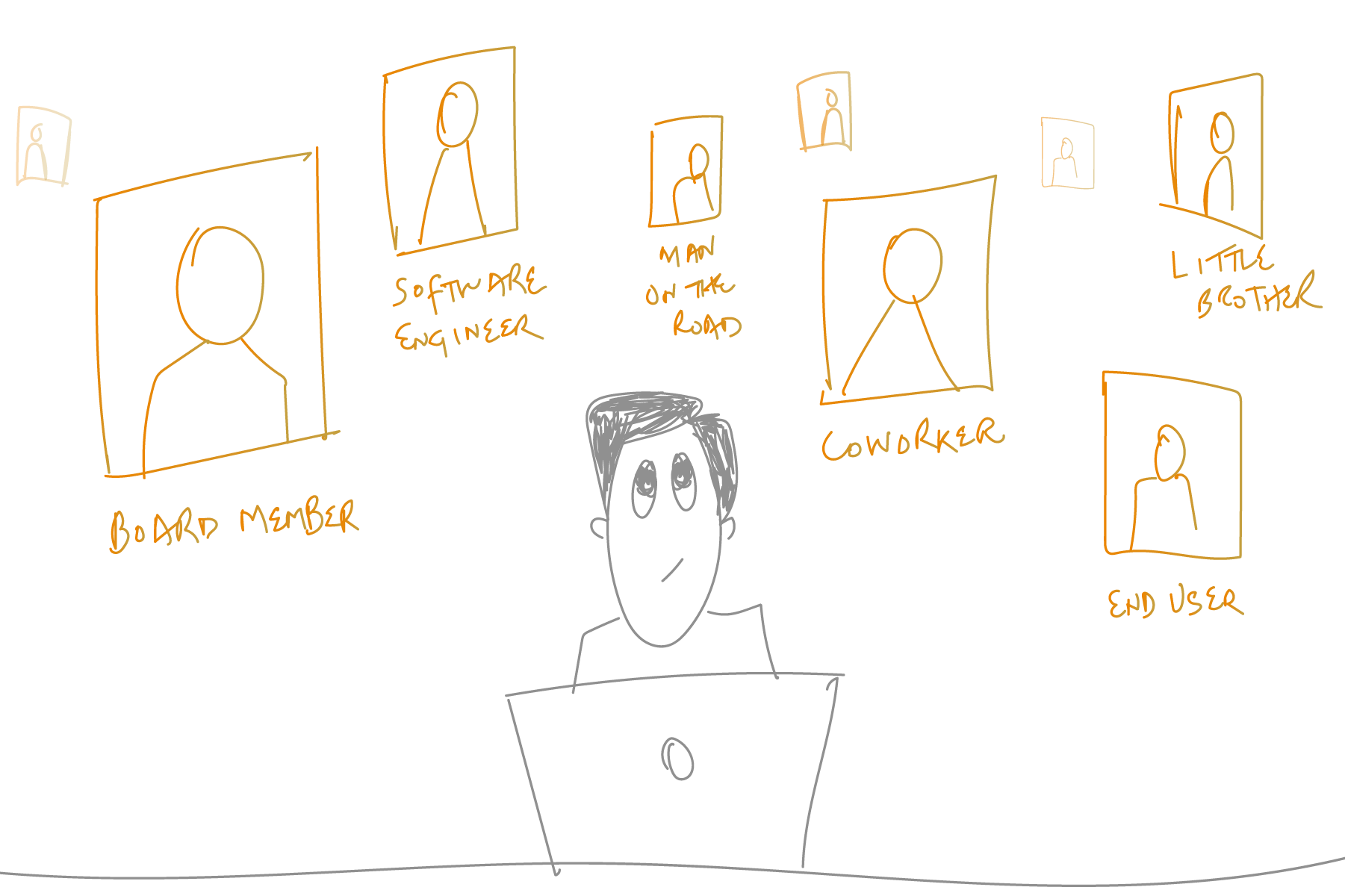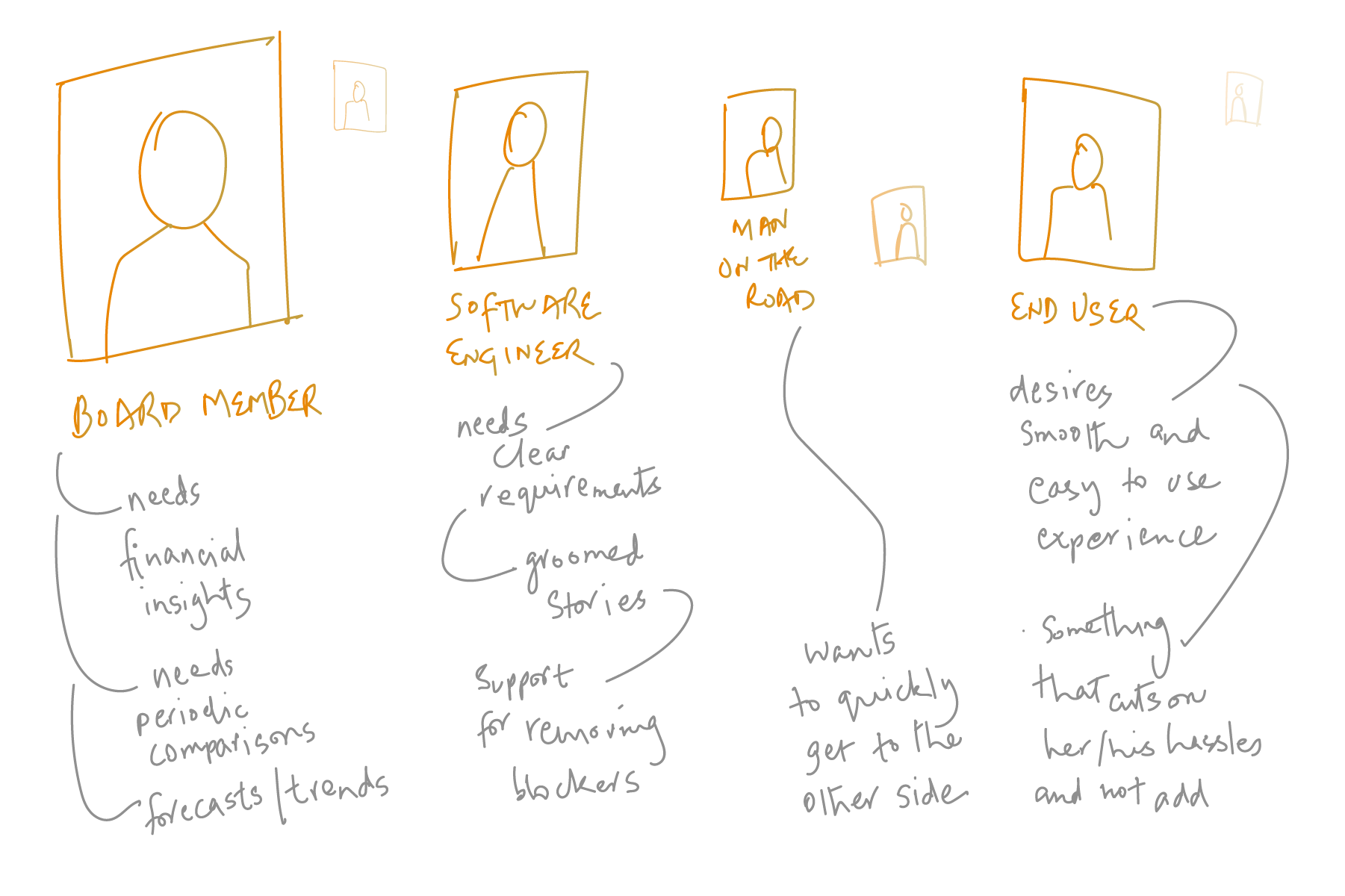be a value contributor: build your understanding - part 1 of 2

Over my career I have been working with some great organizations across verticals like human development, academic research, hospitality, enterprise, big data, ecommerce, marketing and design, and classifieds.
I hope you will find these observations from my career worthwhile. This post has two parts. You are about to read Part 1. Part 2 follows here. Please feel free to reach out at @huzemaqyum.
The curious child in me and the ever pushing will help me bring consistent value to these companies through delivering customer centric solutions, building successful products, and teams. But success does not just rely on curiosity and will. In my journey the other key ingredient I discovered is continuously building your understanding.
Building one’s understanding works at multiple levels.
Understand the User
Regardless of where you work and under which role, there is always someone at the other end waiting to consume the outcome of your efforts. It could be someone internal in the organization or outside. Whether it’s your colleague, your manager, your boss, an executive, board member, a partner, a representative, a client, or a consumer - you should immediately start deriving user personas out of all these roles and consider everything that you are working on for them as your respective products.
The moment you do this, your perspective of looking at your current responsibility (whether it be a task, project, or even your job) will drastically change. Your mind will start identifying the critical areas that align with the ‘user’ expectations and you will be able to focus on ensuring that your ‘product’ meets these expectations and is, in turn, well received.
Earlier on in my career, while working for a human development firm’s communication department, it was a part of my job to manage period reports for the board. Being a young design enthusiast I was excited to embark on this mission and make the most beautifully designed and elegentaly printed annual report. However, as interesting as that may sound, I still had to keep the end users of the report in mind. And let’s be honest, the people who were to consume these reports had the least interest in design. I did some more digging into the previous years’ reports and also studied the profiles of board members to understand their backgrounds. All in all to come up with a report that would actually hit home with its users. What did I do differently this time? Well, the focus was shifted from just good design to good visual representation of usable data. Massive breathing spaces of minimal design were allocated to present bite sized highlights. Key financials were made prominent and comprehensible through clear comparative visuals. This is what the ‘users’ of an annual report were interested in seeing. And yes, they were delighted when they got it.

Later on while consulting for an international hotel chain to improve their social media presence in a country, my starting point was to do a quick audit of their current followers while studying the market and competition to identify who the actual target audience should be. Followed by understanding the demographics, learning about their interests, and how to win their attention. As a result, It was a great hit when we started designing and targeting our social media content towards younger age groups in general, and newly weds and young mothers in particular. The queries flowing in through social media took an upward trend and we were soon witnessing an increased footfall into restaurants, exhibitions, and other activities hosted by the hotel.
While the users in the earlier example were internal to the respective organization, in this case, the win was fueled by the efforts to understand the external users.
Now remember, at any given place and in any given role, you will come across different kinds of ‘users’ that you would need to address (read satisfy) through the different tasks you perform. And understanding the users is just the first step - what follows is the will to deliver every time to meet the respective users’ expectations. Exceeding them is always welcome!
Understand the Value
Meeting user’s expectations is never easy. Let alone exceeding them for a delight. It is a never ending process of analysing your users, keeping an eye on their changing behaviors and demands and tweaking your work (read product) accordingly. This requires that you clearly understand the value that specific users are trying to derive from your product. But how does one do that?
Once you have user personas identified, take a deeper dive to learn what they are actually looking for. For this you would need to study their behaviour closely. It could be very insightful to collect their feedback about your product and be observant of how they interact with other products - essentially the competing ones.
During my stay at the human development organization, I was always interested in one particular insight which was related to fundraisers. National fundraisers mostly just barely met the target but the responses in international fundraisers were always overwhelming. It was the expatriates living abroad that made fundraisers a huge success over and over. The reason was not a surprise. We had refined our communication to emphasize how people working abroad can contribute to the lives of the underprivileged class in their home country. This is the value that people living away from their loved ones are constantly looking for - some way to give back and contribute to their homeland.
However, to make our fundraisers successful amongst local ‘users’ we had to explore a different set of values. We had to offer them some immediate gratification, something tangible perhaps. We profiled our users and planned different events targeted towards a different set of profiles. This helped us in planning a complete year of national fundraising events. An art auction which presented art collectors with a chance to add masterpieces to their prized possessions, an evening national cricket team which gave cricket enthusiasts a chance to dine with their favorite players, a musical evening with a legendary artist attending whose concert is quite an experience. By providing the desired value to respective national groups we were able to attain multifold success: improved national awareness about our human development initiatives, inculcation of stronger affiliation in the citizens, and achieved higher numbers in contributions to support our initiatives.

We are presented with a host of similar situations within our workplaces too. Did your manager just recently praise your co-worker's work over yours? Did you make an effort to identify what value he was able to derive from the co-worker’s task that was probably missed in yours? Were people in your current team more productive when they were working with another manager? Did you try to find out what additional value the other manager was able to offer these resources which kept them motivated?
It is awe inspiring to see how different users reciprocate positively when we make an effort to understand and provide them with preferred value. Always a mutual win!

Member discussion